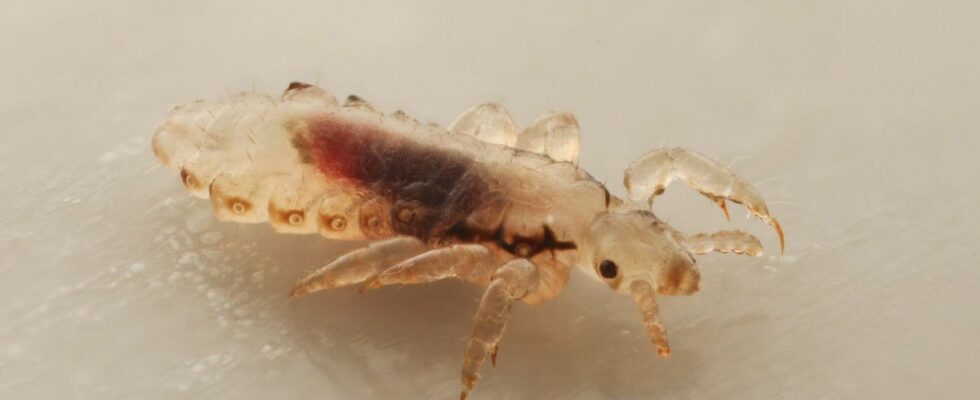Published on
updated on
Reading 3 min.
Back to school means the return of lice. However, these parasites, which feed on blood, are increasingly resistant to treatments. This is why it is important to adopt the right actions to limit their spread and eliminate them, if they have already invaded your children’s scalp.
Lice are insects measuring 2 to 3 mm long, which live on the scalp, where they lay their eggs. Contrary to popular belief, they do not jump. They move between the hair by clinging to it with a powerful pincer that ends each of their six legs. They can live one or two days on the scalp of the same person, feeding on blood. But they do not survive more than three days outside the scalp.
The presence of lice is often detected by the itching they cause in their host. But it is possible to have lice without feeling any bothersome symptoms. If you suspect that your child has lice, inspect his scalp for these parasites. They are usually found very close to the scalp and the back of the neck, or behind the ears. Keep in mind that lice crawl very quickly, which makes them difficult to see. You can help yourself with a fine-toothed comb. Choose metal combs, which are sturdier than plastic ones.
More or less effective treatments
If your child does indeed have lice, there are a multitude of products that are supposed to fight these parasites. But they are not all as effective as we think. Over time, lice have evolved genetically to survive conventional treatments such as malathion or pyrethrin derivatives. This is why products containing these insecticides have been off the market in France for several years, according to the specialized site vidal.fr.
Conversely, there are lotions, creams and sprays on the market that contain non-insecticide substances. These act physically, not chemically, against lice, by suffocating them. These include oily silicone complexes (dimethicone and cyclomethicone), oxyphthirine or coconut oil. These products should be used in addition to a lice comb to remove the parasites.
Some people prefer home remedies like mayonnaise, onion juice and white vinegar, or essential oils, to get rid of lice. But the effectiveness of these natural treatments is not a consensus within the scientific community. Note that essential oils can cause allergic reactions on the scalp of young children.
Limit the risk of contamination
As a precaution, it is important to inspect the scalp of all family members if one of them has lice. But also to disinfect all fabrics and objects that could have been infected by these parasites. Be sure to wash sheets and pillowcases as well as any clothing in contact with the scalp or neck, in the washing machine at a temperature above 50 ° C. Brushes and combs should be soaked in an insecticide solution for about ten minutes. They can be reused a few days after disinfection.
A child with lice can absolutely go to school or daycare, as Health Insurance reminds us on his site. However, it is advisable to notify the teaching or childcare staff so that preventive measures can be taken. If your child has long hair, be sure to tie it up to limit the risk of contamination.
Parents may quickly feel guilty when they see lice on their toddler’s head, but there is no shame in it. The presence of these insects is in no way linked to a hygiene problem. Each year, more than 100 million people worldwide have head lice, according to a study published in 2010 in the very serious New England Journal of MedicineChildren aged 3 to 11 years are mainly affected by this benign condition.
